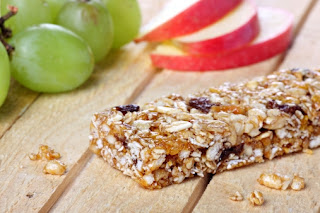Tilapia is a good source of lean protein. In fact, the 2010 Dietary Guidelines for Americans recommend eating eight ounces of fish each week to help prevent cardiovascular disease. The best part? This rich, nutty-flavored recipe tastes delicious and its three easy steps takes just minutes to prepare.
Ingredients:
Amount per serving
This recipe is courtesy of Cooking Light Fresh Food Fast, Oxmoor House (2009).
reade more...
Ingredients:
- 1/4 cup whole natural almonds
- 2 tablespoons dry breadcrumbs
- 1 teaspoon salt-free garlic and herb seasoning blend (such as Mrs. Dash)
- 1/8 teaspoon freshly ground black pepper
- 1 tablespoon canola oil
- 1 tablespoon Dijon mustard
- 2 (6-ounce) tilapia fillets
- Chopped fresh parsley (optional)
- Place first four ingredients in a blender or food processor; process 45 seconds or until finely ground. Transfer crumb mixture into a shallow dish.
- Heat oil in a large nonstick skillet over medium heat. Brush mustard over both sides of fillets; dredge in crumb mixture.
- Add fish to pan; cook for three minutes on each side or until fish flakes easily when tested with a fork. Sprinkle with parsley if desired.
Amount per serving
- Calories: 367
- Calories from fat: 47 percent
- Fat: 19 g
- Saturated fat: 2.1 g
- Monounsaturated fat: 10.6 g
- Polyunsaturated fat: 4.8 g
- Protein: 38.9 g
- Carbohydrate: 9.9 g
- Fiber: 2.5 g Cholesterol: 85 mg
- Iron: 1.3 mg
- Sodium: 321 mg
- Calcium: 28 mg
This recipe is courtesy of Cooking Light Fresh Food Fast, Oxmoor House (2009).




